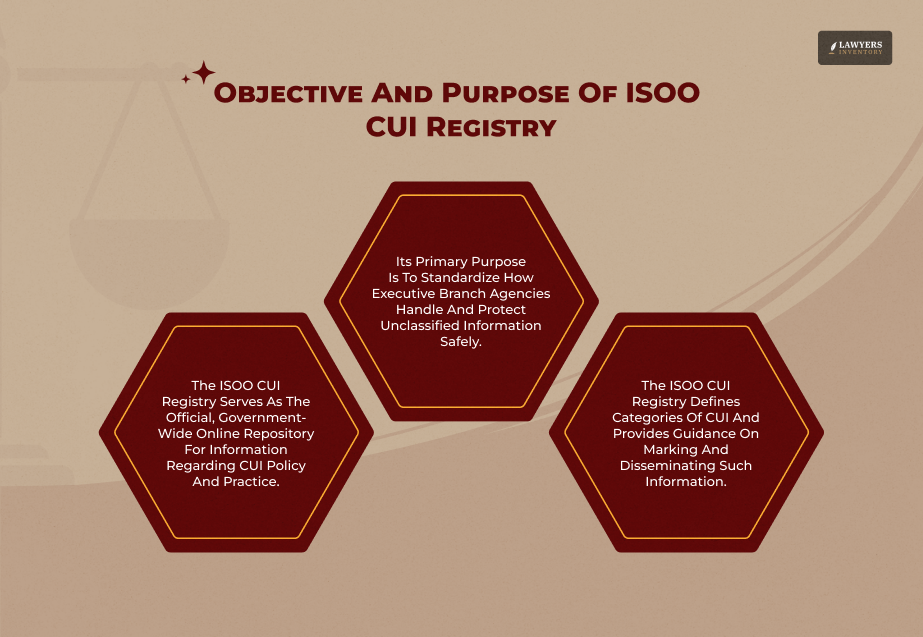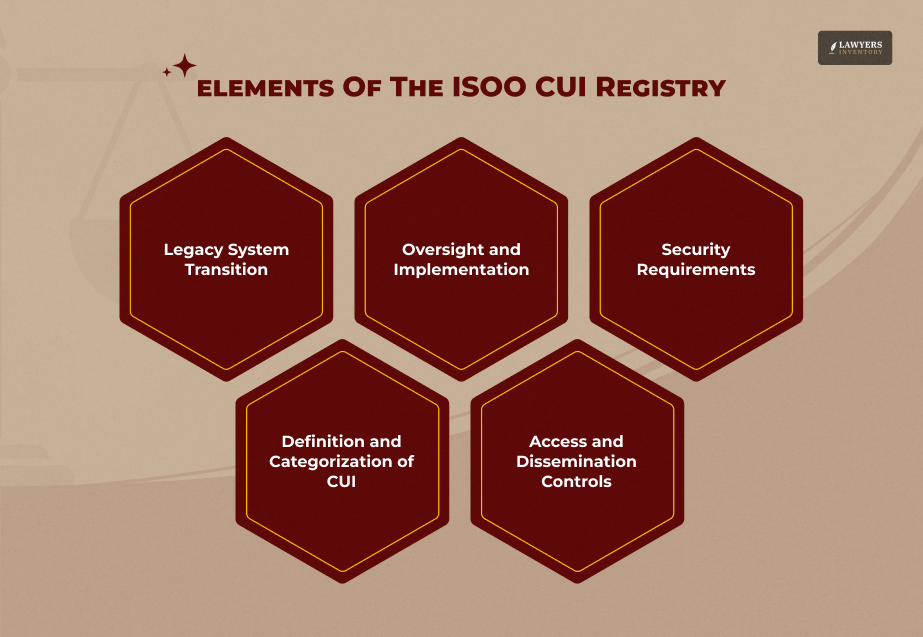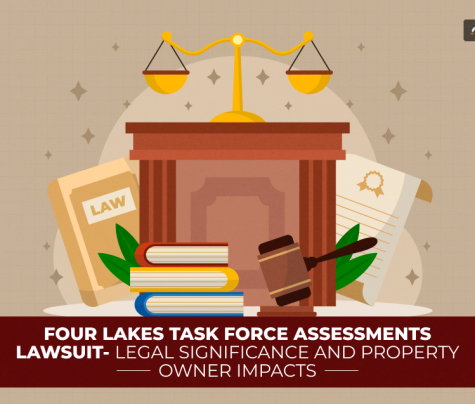
In the U.S. federal government, not all sensitive information is classified. A large portion of government data falls into a middle ground—important enough to warrant protection but not meeting the threshold for classification.
This is the category of data that we commonly call Controlled Unclassified Information (CUI). And the ISOO CUI Registry is at the center of this program.
Managed by the Information Security Oversight Office (ISOO) under the National Archives and Records Administration (NARA), it serves as the authoritative resource that defines how agencies should mark, safeguard, and share CUI.
But exactly what is the purpose of the ISOO CUI Registry?
Hi. In today’s blog, I will cover the following things:
- What the ISOO CUI Registry is.
- What its objectives are.
- The key elements of ISOO CUI Registry.
- Legality related to ISOO CUI Registry.
If these are some of the things that you want to know, then you have come to the right place. Therefore, keep on reading this blog till the end…
Background And Origin Of The CUI Registry
Before the CUI Program, the government had no single standard for handling sensitive but unclassified information.
Agencies used a patchwork of terms such as For Official Use Only (FOUO), Sensitive But Unclassified (SBU), and Official Use Only (OUO). These inconsistent labels created confusion, both within and across agencies.
This inconsistency posed real risks:
- Agencies marked similar data differently, leading to misinterpretation.
- Contractors handling multiple agency contracts struggled with conflicting guidance.
- Courts and oversight bodies had trouble interpreting what protections were legally required.
To fix these issues, President Barack Obama issued Executive Order 13556 in 2010, establishing the CUI Program.
The order designated ISOO as the Executive Agent responsible for overseeing the program. In 2011, ISOO launched the CUI Registry as a centralized online reference for all agencies.
As stated in their online portal, “CUI Registry is the Government-wide online repository for Federal-level guidance regarding CUI policy and practice.”
Basically, the Registry collects and organizes some of the most crucial things that dictate which types of information qualify as CUI and how they must be handled. These include:
- Laws.
- Regulations.
- Government-wide policies.
What Is The Purpose Of The ISOO CUI Registry?

Handling unclassified information from the federal government is a task. And that is why the Registry exists.
Its main purpose is to bring clarity, consistency, and accountability to the handling of unclassified sensitive information.
Here are some of its objectives that you need to take a look at:
1. Standardization Of CUI Management
Before the Registry, agencies independently created markings and policies. The Registry standardizes:
- Definitions: Clear descriptions of what qualifies as CUI.
- Markings: Approved banner lines, portion markings, and footers.
- Handling: Guidelines for safeguarding, dissemination, and decontrol.
This ensures that all federal agencies speak the same language when it comes to managing CUI, reducing the risk of errors.
2. Centralized Reference For Policies And Procedures
The Registry acts as a government-wide repository. Instead of agencies relying on internal interpretations, they can consult the Registry for authoritative answers.
It includes:
- CUI categories and subcategories.
- Citations to the legal or policy authority that requires protection.
- Approved marking formats.
- Handling and dissemination controls.
By serving as a single reference point, it prevents fragmentation and guesswork.
3. Oversight And Compliance Enforcement
As the Executive Agent, ISOO uses the Registry to monitor compliance. It informs:
- Agency inspections and assessments.
- Training requirements for federal employees and contractors.
- Reporting standards for agencies managing CUI.
In this way, the Registry is not just a guidance tool—it is also the backbone of federal oversight.
What Are The Key Components Of The ISOO CUI Registry?

To understand its practical use, it’s helpful to look at what the Registry actually contains.
Categories And Subcategories
The Registry organizes CUI into broad categories such as:
- Critical Infrastructure
- Defense
- Export Control
- Immigration
- Law Enforcement
- Privacy
Within each category are subcategories. For example, the “Defense” category includes Export Controlled Information and Naval Nuclear Propulsion Information.
Each entry provides:
- A description of the information type.
- The legal/regulatory basis for protection.
- Specific handling requirements.
This structured approach ensures agencies and contractors can quickly identify whether certain information is covered.
Markings, Controls, And Handling Guidance
One of the Registry’s most important features is its guidance on markings and handling. For each category, it specifies:
- Markings: Standardized banners (e.g., “CUI”), portion markings, and decontrol indicators.
- Safeguards: Physical security (locked cabinets, controlled access rooms), technical safeguards (encryption, access control systems), and administrative safeguards (training, access restrictions).
- Limited Dissemination Controls (LDCs): Restrictions on who may receive the information.
- Decontrol procedures: When and how information can be removed from CUI status.
By clarifying these protocols, the Registry minimizes the risk of mishandling—whether through accidental release or unauthorized disclosure.
What Is The Role Of The ISOO CUI Registry In Agency Implementation?
The Registry doesn’t exist in a vacuum; agencies must actively use it to build their policies.
1. Executive Branch Adoption
The Registry is the official reference for the entire Executive Branch. Agencies must adopt their categories, markings, and controls into their own CUI programs.
This means that whether you’re working with the Department of Defense, Homeland Security, or Health and Human Services, the foundation of CUI handling remains the same.
2. Agency-Specific Policies vs. Government-Wide Guidance
While the Registry provides the baseline, agencies often create additional policies tailored to their missions.
For example:
- Department of Defense (DoD) requires contractors to comply with NIST SP 800-171 for CUI security.
- Health and Human Services (HHS) may apply additional safeguards to protect medical data classified as CUI.
Irrespective of whatever the case might be, agency-specific policies must align with the Registry. In no way can they contradict it.
Additionally, contractors working with multiple agencies must be familiar with both the Registry and each agency’s implementing policies.
How Does The ISOO CUI Registry Impact Information Sharing And Security?
The Registry achieves a careful balance: protecting sensitive data while promoting collaboration.
1. Protecting Sensitive Information
By standardizing markings and safeguards, the Registry ensures that CUI receives consistent protection. This reduces risks like:
- Unauthorized disclosures.
- Cyberattacks.
- Improper decontrol.
2. Facilitating Secure Information Sharing
The CUI Program Blog rightly points out that the Registry makes inter-agency collaboration easier. With one common framework:
- Agencies can exchange information without confusion over labels.
- Contractors can work across agencies without facing conflicting requirements.
- Oversight bodies can evaluate programs using a single standard.
3. Intersection With Cybersecurity and FOIA
The Registry also interacts with broader legal frameworks:
- Cybersecurity: CUI security requirements overlap with Federal Information Security Modernization Act (FISMA) and contractor obligations under NIST 800-171.
- Freedom of Information Act (FOIA): CUI markings do not exempt information from FOIA, but they help agencies determine whether exemptions apply (e.g., privacy or law enforcement).
This interplay highlights the Registry’s broader role in balancing transparency with security.
Is The ISOO CUI Registry The Best Solution?
The ISOO CUI Registry is not just a database; it is the core of the federal government’s method of safeguarding sensitive unclassified information.
Its intents are explicit:
- Re-characterize the processes agencies use to set definitions, mark, and protect CUI.
- Gather all instructions into a single, most authoritative reference.
- Support the management and confirm the Executive Branch’s adherence to the requirements.
- Make it easier for secure communication with other parties still under protective measures.
With the Registry, the handling of unclassified but sensitive data can be made more uniform and with more care by merging all relevant policies, laws, and procedures into one easy-to-use platform.
For agencies, contractors, and oversight bodies, it is both a source of confidence and a tool for ensuring the security of federal information.
Read Also:
- Is Section 8 Getting Cut Off: Answering The Most Asked!
- Google Incognito Lawsuit: Can You Really Fight Against Big Companies Over Data Privacy?
- AT&T Data Breach: What Affected Customers of This $13 Million Class Action Should Know











0 Reply
No comments yet.